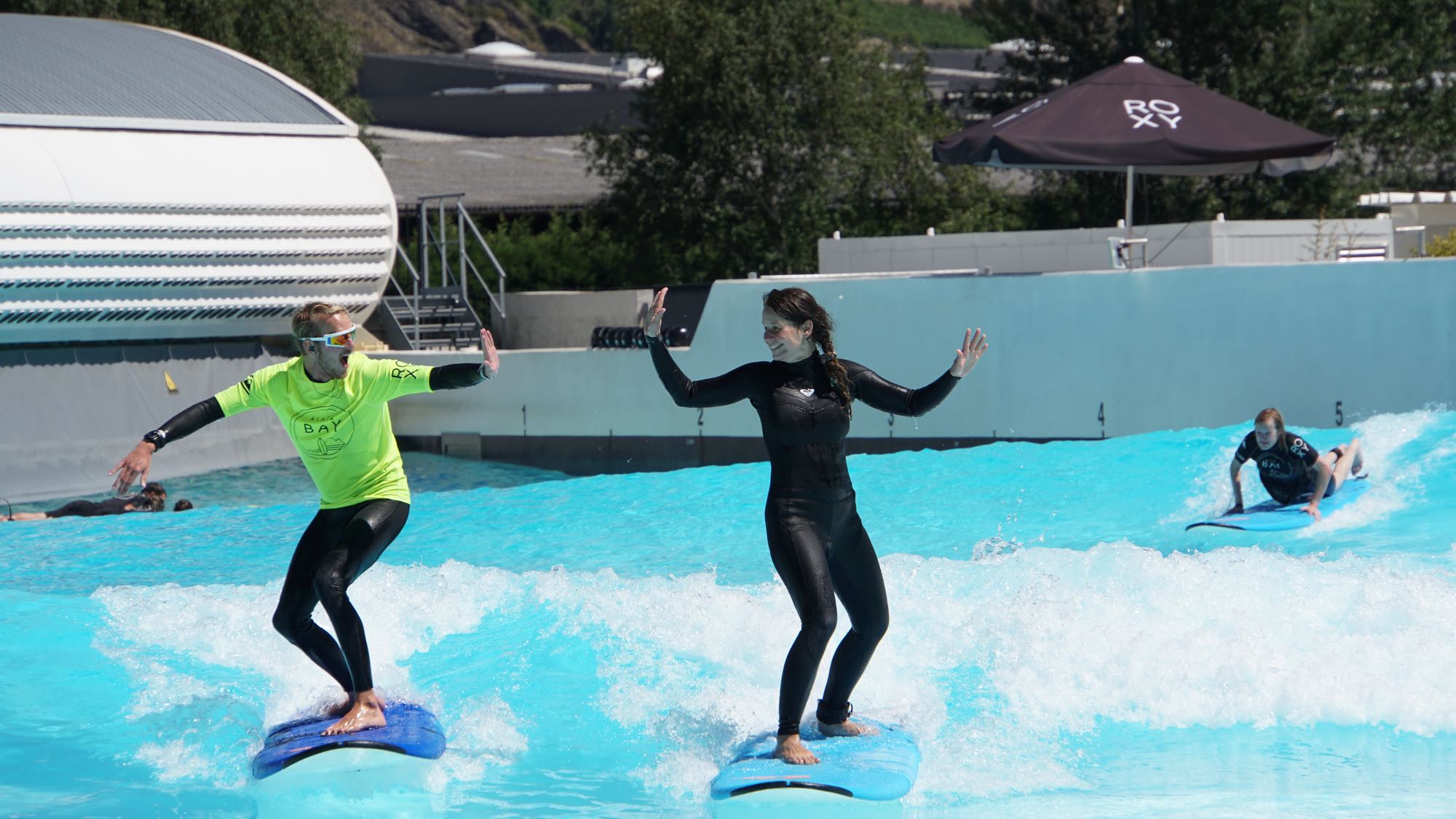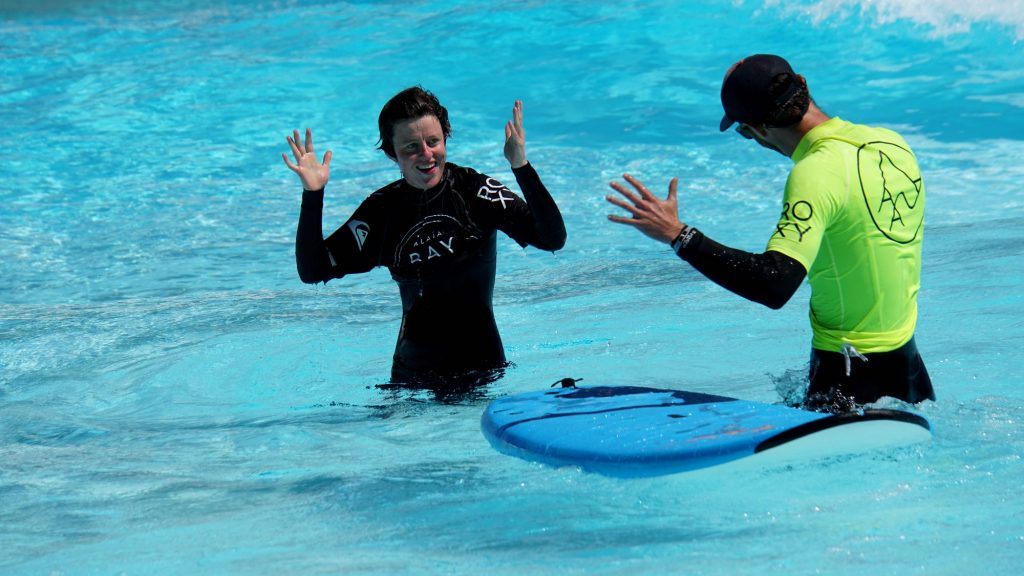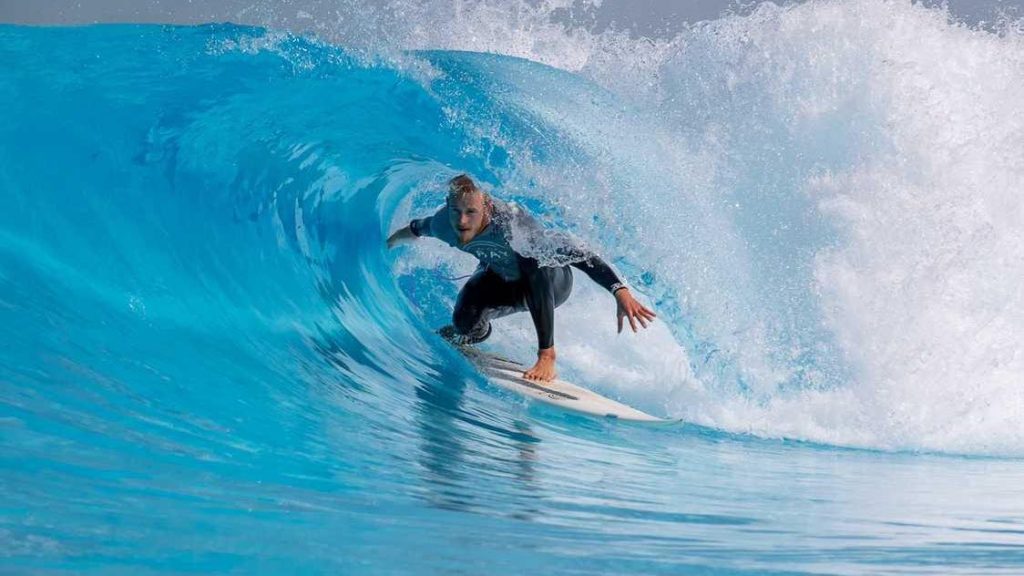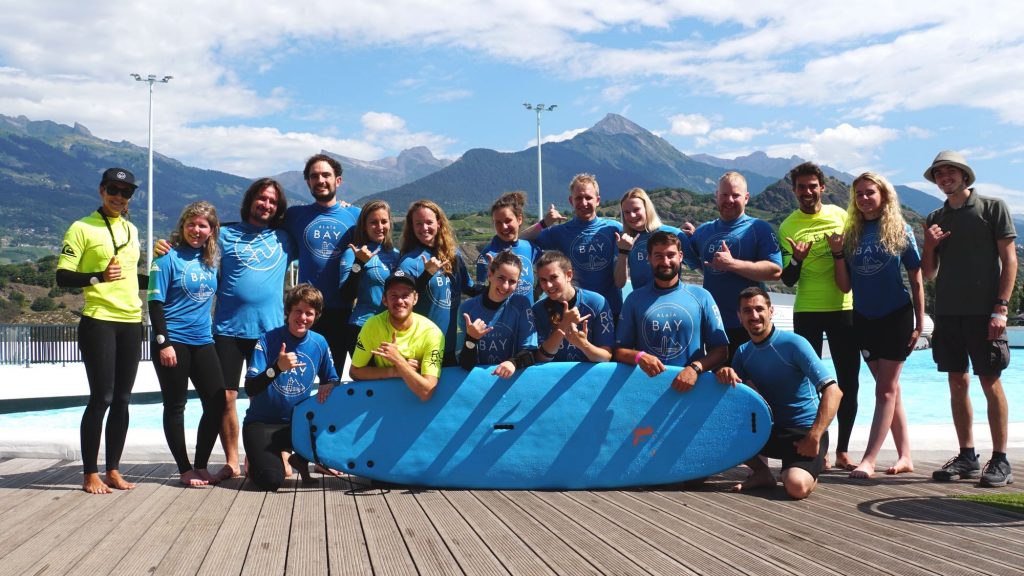Pool program brings wave-riding to the deaf in Switzerland

One of the coolest things about wave pools is that driven, ocean-less individuals can go from zero to hero in just a few years. All it takes is heaps of drive, ambition and close proximity to one of the world’s surf parks. Simon Plachtzik started surfing five years ago during a holiday in Portugal and waved goodbye to his previous life. Simon was hooked. The transformation led him to find work at surf camps in Europe and Morocco. He then did his ISA surf teacher certificate training which led him here, to Alaia Bay in Switzerland where he kicked off a surfing program for the deaf.
What gave you the idea to start this program?
When I was working as a Coach in Morocco, there were three deaf clients coming, saying they needed a German speaking surf teacher because they can’t lip read English. So I did it and spent two weeks with them. At first, I was blocked because I didn’t know how to communicate accordingly. But with time, you figure out ways. After those two weeks, they told me it would be way easier for them to learn to surf if there was a surf teacher speaking sign language. I have a background in linguistics and was always fascinated by new languages, so I thought I’d take the challenge.
I started looking for a way to learn Swiss-German sign language DSGS (there are many different sign languages in the world, they have been evolving naturally just like spoken languages) in the best and most profound way possible. In the end, I decided to apply for a 4-year bachelor studies in Zurich to become a sign language interpreter. Now I work part-time with Alaia and study part-time in Zurich.

Who can participate and from which countries?
I’ve been planning to combine my passion for sign language and surfing for about 2-3 years now and am really happy that we finally got to kick off the project at the end of June. I try not to focus on the hearing disability part, but more on the common language part. So on that weekend, we had people with many different degrees of hearing disability, but also hearing people that know the language. With every language comes a culture, same with the sign languages. The goal of this project is to provide a cultural platform, independent of how well you can hear.
Due to the regionality of the language, I’m only able to provide this service for people that speak Swiss-German sign language DSGS. For now, I have enough work to do with focussing on Switzerland; I’m still far away from being fluent in DSGS haha. But in the future, I hope to be able to deepen my sign language knowledge, learn other sign languages and make this project more international!

What are the special challenges deaf people face when learning to surf and how do you address those challenges?
I am not deaf, so it is hard for me to say how surfing is different for deaf people compared to hearing people. I can only talk from a viewer’s perspective. For now, I can say: The 17 people that signed up for the program end of June were surfing just as good as other beginners and faced the same challenges as hearing people. Many things were even easier for them: Due to the visuality of the language, they could watch, focus and copy movements easier than people without hearing disability. But that means, I had to focus on the visual aspect during my surf lesson as well: I used a whiteboard to draw or write words I didn’t know or those words I wanted to stress. I also tried to regularly look at everybody in my round to make sure I didn’t miss any questions. But all participants were really lovely and patient with me; they helped me whenever I was unsure of words, gave me the right signs and communicated slowly and clearly with me.

For now, this weekend in June was a test to see how the community and all the people involved in the project responded. And the response was overwhelming; the participants were stoked about the possibility and thanks to the help of Alaia, the organisation of it went without any problems. There are no specific dates for the next round yet, but I’m pretty sure it will happen again soon! The goal is now to build a community of sign language surfers that are motivated to continue progressing. Switzerland has a big surfing community and is not too far from the ocean (8h to Biarritz). Now that we have the Alaia Bay wave pool, I think we can go very far with this project!
Alaia fully stands behind me with this program. I couldn’t have done it without their support. They helped me to organise this weekend as well as test sessions before and they support the program financially. I’m very grateful for this collaboration and I’m sure that together, we can continue to improve and expand this program to reach more people.
Related Coverage
